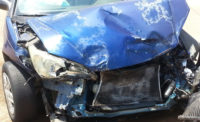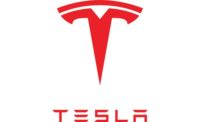A driver’s inattention, overreliance on his car’s advanced driver assistance system, and use of the system inconsistent with manufacturer guidance, coupled with the system permitting driver disengagement from the driving task, led to the Jan. 22, 2018, crash in Culver City, California, according to a National Transportation Safety Board (NTSB) brief issued this week.
Highway Accident Brief 19/07 details the results of the NTSB’s investigation of the crash involving a Tesla Model S P85 and a Culver City Fire Department 2006 Seagrave Fire Truck in the high-occupancy vehicle lane of southbound Interstate 405. No one was injured as a result of the crash.
The response to a collision in the northbound freeway lanes 25 minutes earlier left a California Highway Patrol vehicle parked on the left shoulder of southbound I-405 and the Culver City Fire Department truck parked diagonally across the southbound HOV lane. Emergency lights were active on both vehicles. The Tesla, which had its “Autopilot” system engaged, was traveling in the HOV lane, behind another vehicle. After the lead vehicle changed lanes to the right, the Tesla remained in the HOV lane, accelerated and struck the rear of the fire truck at a recorded speed of about 31 mph. A forward collision warning alert occurred 0.49 seconds prior to impact but the automatic emergency braking system did not engage. The driver’s hands were not detected on the steering wheel during this sequence nor did the driver apply steering or braking prior to impact.
Tesla’s “Autopilot” system includes Autosteer and Traffic-Aware Cruise Control. Autosteer is a lane-keeping assist system that can only be engaged after Traffic-Aware Cruise Control is activated. The Traffic-Aware Cruise Control is an adaptive cruise control system that modifies speed based on information from the camera and radar sensors. The Tesla Model S owner’s manual contains numerous warnings about the limitations of Traffic-Aware Cruise Control and warnings about Autosteer and the need for drivers to keep their hands on the wheel.
The NTSB determined the probable cause for the crash was the Tesla driver’s lack of response to the fire truck parked in his lane, due to his inattention and overreliance on the car’s advanced driver assistance system; the Tesla’s “Autopilot” design which permitted the driver to disengage from the driving task; and the driver’s use of the system in ways inconsistent with guidance and warnings from Tesla.






